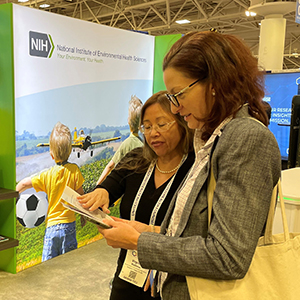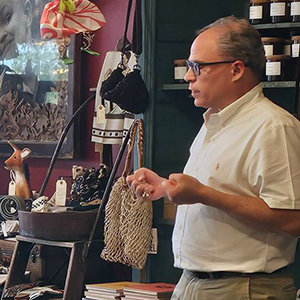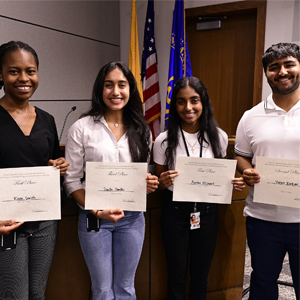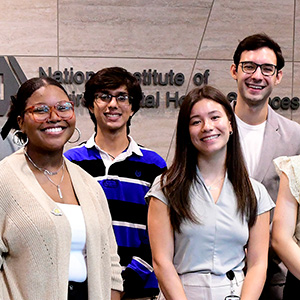With most of the nation avoiding large gatherings due to the COVID-19 pandemic, scientific conferences have largely migrated to cyberspace. That was where the spring meeting of the Genetics and Environmental Mutagenesis Society (GEMS) took place May 12.
GEMS president-elect George Woodall, Ph.D., from the U.S. Environmental Protection Agency (EPA), helped to organize the virtual event, which included six speakers. Topics ranged from neurotoxicity in zebrafish to genetic mutations in cancer. With the pandemic front of mind for many people, the featured presenter was a local academic who has studied risk communication for decades.
David Berube, Ph.D., is a professor in the communications department at North Carolina State University and a member of the National Toxicology Program Board of Scientific Counselors. He researches pandemic communications and includes related material in his classes.
 Among his other responsibilities, Berube directs the Public Communication of Science and Technology project at North Carolina State University. (Photo courtesy of David Berube)
Among his other responsibilities, Berube directs the Public Communication of Science and Technology project at North Carolina State University. (Photo courtesy of David Berube)Nothing but the truth
Berube emphasized the importance of organizations speaking with one powerful voice. “You can’t send mixed messages. You’ve got to build trust every time you stand up at a podium and talk to the public,” he said.
“Once in a while, in the weird world we’re in, you get someone like [National Institute of Allergy and Infectious Diseases Director Anthony] Fauci, and you’re really lucky. He speaks clearly, he speaks well, he speaks with authority, and you know for a brief period in history, you’ve got to let him do his thing,” Berube added.
In the current crisis, the public is desperate for scientific and medical information that is truthful, accurate, and unbiased, he said. “People believe what their doctors say, people believe scientists and engineers, and people generally believe what comes out of hospitals. And they want to hear more.”
Barriers to effective communication
Six major challenges affect the public’s understanding of pandemics, according to Berube.
- Infrequency – Pandemics are rare, which makes studying them more difficult due to small samples.
- Non-Western – Disease outbreaks occur more often in the developing world, and language barriers still exist.
- Complexity – Testing, tracing, and social distancing are difficult to explain to any audience.
- Lack of trust – Trust is easy to lose and difficult to regain.
- False information – There is too much false and misleading information going out to the public.
- Digital media – Online outlets can contribute to information overload.
Zebrafish point the way
Two presenters discussed how they use zebrafish to model the physiological effects of environmental exposures.
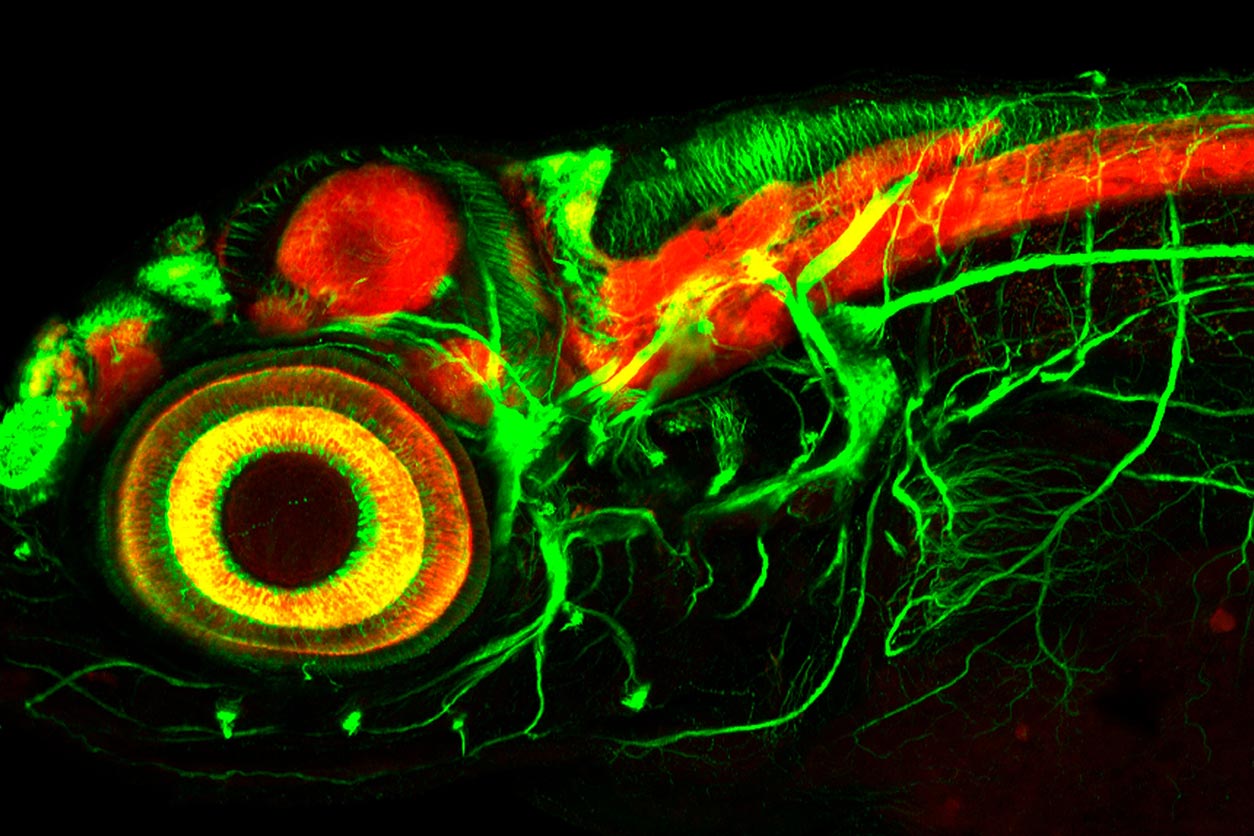 Zebrafish embryos offer transparency, short generation time, rapid life cycle, and highly conserved early vertebrate development, according to Balik-Meisner. (Photo courtesy of Jay Patel, Attribution 4.0 International, CC BY 4.0)
Zebrafish embryos offer transparency, short generation time, rapid life cycle, and highly conserved early vertebrate development, according to Balik-Meisner. (Photo courtesy of Jay Patel, Attribution 4.0 International, CC BY 4.0)Michele Balik-Meisner, Ph.D., a bioinformatics analyst at Sciome, described her research into why the same chemical exposures affect different individuals in different ways.
Large-scale analysis of zebrafish embryos can detect effects of hundreds of chemicals and generate significant amounts of data. The results could shed light on gene-environment interactions and potentially inform human risk assessment.
Xia Meng Howey, an EPA trainee, reported on her experiments using zebrafish to measure gene expression and neurotoxicity following exposure to various per- and polyfluoroalkyl substances. “The zebrafish is an excellent model to quickly screen many new chemicals,” she said.
GEMS will hold its fall meeting in October.
Citations:
Balik-Meisner M, Truong L, Scholl EH, La Du JK, Tanguay RL, Reif DM. 2018. Elucidating gene-by-environment interactions associated with differential susceptibility to chemical exposure. Environ Health Perspect 28;126(6):067010.
Gaballah S, Swank A, Sobus JR, Howey XM, Schmid J, Catron T, McCord J, Hines E, Strynar M, Tal T. 2020. Evaluation of developmental toxicity, developmental neurotoxicity, and tissue dose in zebrafish exposed to GenX and other PFAS. Environ Health Perspect 128(4):47005.
(Ernie Hood is a contract writer for the NIEHS Office of Communications and Public Liaison.)





